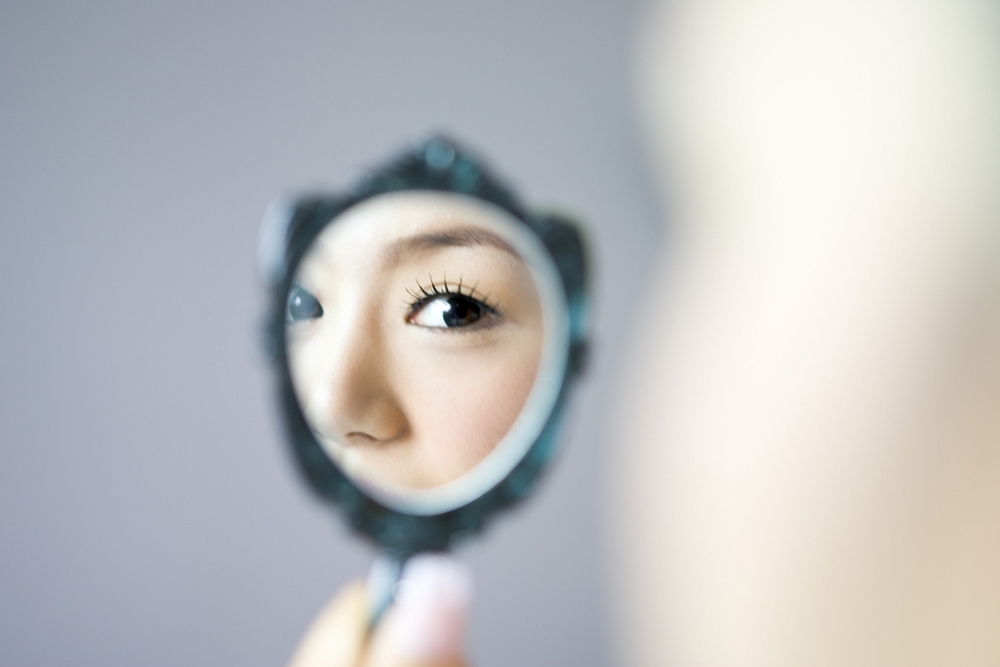


Scientists are finding that gazing at one’s reflection in the mirror without an agenda reduces stress, anxiety, and depression, and increases self-compassion. In 2016 psychologist Dr. Tara Well led a mirror meditation workshop at the Rubin Museum. Here she shared more about this emerging practice.
We live in a culture that often values thinking over feeling. When we are unaware of our emotions, we don’t have the power to change them, or take responsibility for them. Sometimes we project our unrecognized emotions onto others—this creates drama that eventually helps us realize how we are really feeling. In this way, we use our relationships as mirrors for our emotions. When you are aware of your own emotions, you can relate to others more mindfully, and stay in the present moment, which is the only place something new can happen!
Some traditional forms of meditation involve gazing on a fixed point, known as a drishti. If you are a visual person, you may find that focusing on a still point makes it much easier to stay present than closing your eyes. In mirror meditation, you are your own focal point, and of course much more complex than a spot on the wall. Seeing your own image can evoke emotions and memories more readily than fixed gaze meditation. Your mind may drift, but it always comes back to you in the mirror. Through mirror meditation, you come to realize that there is really no escape from yourself. If you do the mirror meditation regularly, you will confront yourself —your thoughts, emotions, hopes, and fears. Seeing yourself actually experience these emotions can be incredibly transformative. You see your own joy and suffering and it evokes self-compassion.
So much research is coming out on the benefits of meditation. Anyone who wants to reduce stress, increase their concentration, and enjoy a greater sense of well-being should try it. At first, you may feel uncomfortable with sitting in stillness and “doing nothing.” This is a normal reaction—most of us are in a constant state of doing and have forgotten how to be still. We feel the urge to fill up each moment with some thought or activity. Meditation is all about resting in stillness; letting emotions and thoughts pass by in your mind like clouds in the sky. In this place of stillness, we can refresh and revive ourselves. Under the surface chatter, there is always a calm center within us.
I think meditating in a museum allows people to access the stillness within, to transcend time, and to experience the sacred in ways that ordinary environments cannot.
Get the latest news and stories from the Rubin, plus occasional information on how to support our work.